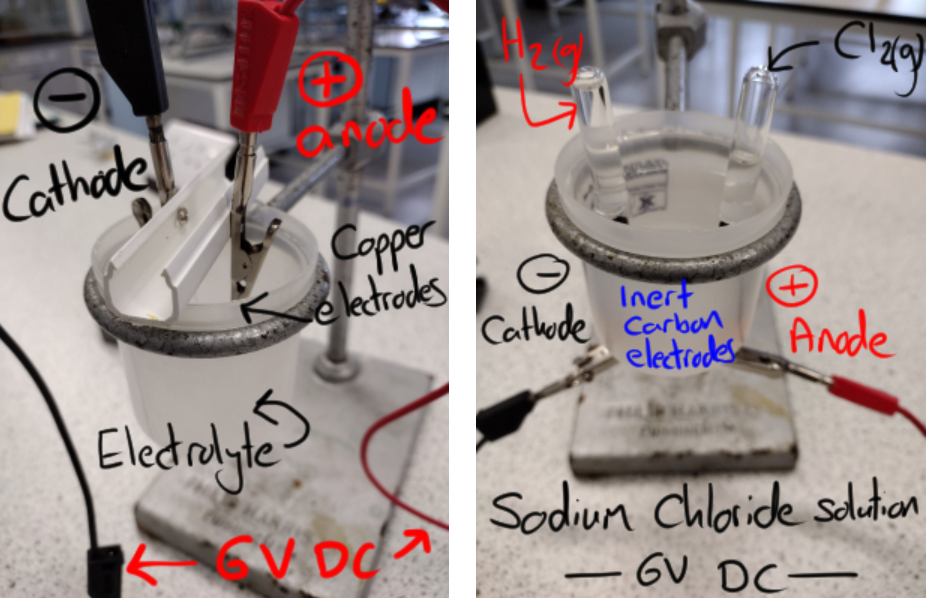Required Practical 09: Electrolysis
About this practical...
By completing this practical, you will be able to observe the products. When copper (II) sulphate solution is electrolysed, copper is produced at the cathode (because copper is less reactive than hydrogen) and oxygen is produced at the anode (because hydroxide ions are less stable than sulphate ions). You will be able to see a new layer of copper forming on the cathode. A teacher may demonstrate the same with copper (II) chloride. Here chlorine will form at the anode as chlorine is less reactive than the sulphate. This is rarely done as a class practical due to the intensity of the chlorine smell.

Method:
1. Attach two clean strips of copper, one to each of the crocodile clips.

2. Lower the frame into the copper sulphate solution ensuring that the clips do not touch the solution and that the copper strips are not touching.

3. Attach cables from the crocodile clips to the power supply's DC connections.

4. Ensure that the voltage does not exceed 6V then turn of the power supply and begin making observations.

You may also measure the dry mass of each electrode before and after a set time to calculate the production rate of copper.

Your teacher may allow you to try electroplating. To do this, swap the strip of copper on the cathode for a clean coin and run the experiment further. (Note, this may stop your coin from being recognised in a vending machine so use low value coins).

All copper (II) sulphate solution must be poured into the bucket at the end, it must not go down the sink.


Safety & Managing Risks
Usual lab rules must be followed: loose hair tied back, goggles worn throughout the lesson, bags and stools tucked away and notify the teacher of any spills or breakages immediately. Take care of the proximity of water to the sources of electricity. The copper sulfate solution must go into the bucket, if it goes down the drain, it is toxic to aquatic life. For more detailed information, please consult CLEAPSS.

Technician notes:
Bottles of copper (II) sulphate solution

Beakers

Crocodile clips mounted on plastic tracks

Wires

Power packs limited to 6V

Balances (to find mass of copper strips) - optional

Bucket to collect copper(II) solution

For the staff demonstration:

As above but larger to allow for the collection of anode gases

Copper chloride solution as an alternative electrolyte (show chlorine production)

2 boiling tubes (oxygen -relights glowing splint / chlorine - smell)

This page was updated on: 8th January 2022
